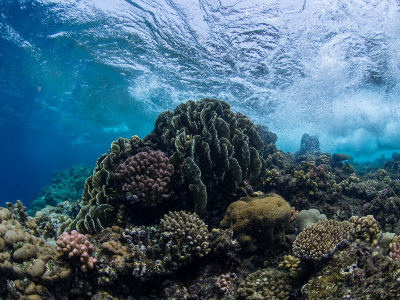Using AI to control energy for indoor agriculture
30 September 2024
Published online 17 April 2016
Scientists explain how algae help corals tolerate extreme heat in the Arabian seas.

By screening almost 1,000 coral samples from the entire Arabian Seas, an international research team has found that an algal species is partly responsible for the heat-tolerating prowess of the PAG corals1. The algal species, Symbiodinium thermophilum, lives symbiotically in the corals.
When the Middle East climate changed from cooler and moister to warmer and arid, reaching present-day conditions about 4000 years ago, the water temperatures in PAG increased. The symbiotic relationship between the corals and algae responded to this climate change.
Extreme temperature and exceptionally high salinity in the southern PAG shaped the distribution of the algae. They are now dominant in the southern PAG but scarce in the Gulf of Oman and the Red Sea with a low genetic diversity, the researchers say.
The corals and algae in the PAG ecosystem have had millennia to adapt, whereas the adaptation to global warming will need to take place over decades to centuries, says Christian R. Voolstra, one of the researchers from King Abdullah University of Science and Technology (KAUST), Saudi Arabia.
“Not all species will have such adaptation capabilities, resulting in a substantial loss of coral diversity,” Voolstra says. “This stresses the need for protecting present-day biodiversity from which more stress-tolerant corals can be selected.”
doi:10.1038/nmiddleeast.2016.43
Stay connected: